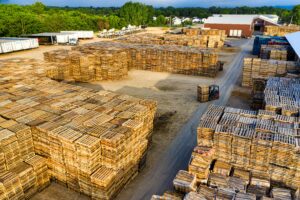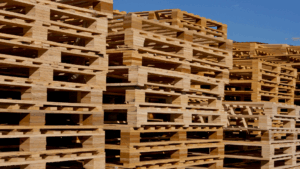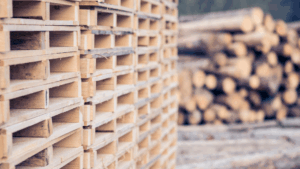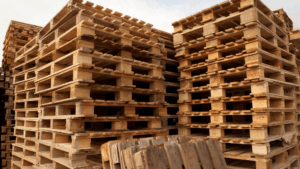Choosing the Best Pallet
The humble pallet is the unsung hero of global logistics and supply chain management. It’s the foundational platform upon which billions of dollars of goods are stored, moved, and shipped every single day. Yet, when it comes time to purchase, many businesses default to the cheapest or most readily available option without fully considering the long-term impact on their operations, product integrity, and bottom line. Choosing the best type of pallet to buy is a critical strategic decision that influences everything from warehouse efficiency and international compliance to worker safety and sustainability goals.
This comprehensive guide, drawn from years of industry experience, will meticulously break down the options available to you. We’ll move beyond the simple wood versus plastic debate to explore a spectrum of materials, designs, and considerations, ensuring you gain the knowledge necessary to select the perfect pallet for your specific operational needs. From the bustling industrial hubs of the Lower Mainland, Canada, where countless businesses in cities like Vancouver and Surrey rely on efficient freight logistics, to specialized clean-room environments, the right pallet choice can be a game-changer.
Core Factors Influencing Your Pallet Purchase Decision
Before diving into the specific types of pallets, it is essential to first establish the criteria by which you will evaluate them. Your decision must be driven by your unique operational environment and product characteristics.
Load Capacity and Weight Distribution
The primary function of a pallet is to safely bear weight. Failure to match the pallet’s dynamic and static load capacity to your freight requirements is a recipe for disaster, leading to damaged goods, broken equipment, and dangerous working conditions.
- Static Load Capacity: The maximum weight a pallet can support when resting on a solid surface, such as the warehouse floor. This is often significantly higher than the dynamic capacity.
- Dynamic Load Capacity: The maximum weight a pallet can support when it is being moved by material handling equipment, such as a forklift or pallet jack.
- Racking Load Capacity: The maximum weight a pallet can hold when resting across a set of unsupported rack beams in a storage system. This is the most demanding condition and is often the lowest capacity rating.
You must choose a pallet that exceeds the demands of your heaviest unit load in its most stressful application (typically racking).
Open-Loop vs. Closed-Loop Systems
Your supply chain model dictates whether you need a durable, long-life asset or an expendable, one-time-use platform.
- Open-Loop (One-Way Shipping): Pallets are used for a single journey and are not expected to be returned. In this scenario, lower initial cost and lighter weight (to save on freight charges) are the primary considerations. Expendable pallets like presswood or lightweight wood options are often best.
- Closed-Loop (Internal or Rental Pool): Pallets are repeatedly used within a facility or a tightly controlled distribution network. Here, durability, consistency, and a long lifespan offer the best return on investment (ROI), making high-quality plastic or metal pallets more economical over time despite a higher initial cost.
Durability, Lifespan, and Repairability
How often will the pallet be used, and in what conditions? A pallet used once a year needs different durability than one cycling through a distribution center weekly.
- Long Lifespan Materials: Plastic and metal pallets often boast lifespans of 10 years or more, offering consistency throughout hundreds of cycles.
- Repair Focus: Wood pallets have a shorter typical lifespan but are highly repairable. A quick board replacement can put a damaged wood pallet back into service cheaply and quickly.
Compliance and Hygiene Requirements
Certain industries or international shipping destinations impose strict requirements on pallet materials.
- ISPM 15 Compliance: For international shipping, wood packaging materials (WPM) like pallets must be treated (usually heat-treated or HT) and stamped with the ISPM 15 mark to prevent the spread of pests. Plastic and presswood pallets are naturally exempt from this requirement, which can significantly streamline export logistics.
- Hygiene and Cleanliness: Industries like food and beverage, pharmaceuticals, and chemicals require non-porous surfaces that are easy to sanitize. In these environments, plastic or certain metal pallets are mandatory to avoid contamination, moisture absorption, or mold growth.
The Main Types of Pallet Materials: A Detailed Comparison
The central question in choosing the best type of pallet to buy revolves around material: wood, plastic, or metal. Each has distinct benefits and drawbacks tailored to different operational requirements.
1. Wood Pallets: The Industry Standard
Wood remains the most prevalent pallet material, accounting for the vast majority of all units in circulation. It is the default choice for general-purpose use.
Advantages of Wood Pallets
- Cost-Effectiveness: The lowest initial upfront cost, making them ideal for companies in the Lower Mainland managing massive volumes or one-way shipping.
- High Strength-to-Weight Ratio: Properly constructed hardwood pallets can support extremely heavy loads, often higher than many plastic alternatives.
- Readily Repairable: Damaged boards can be replaced easily and cheaply, extending the pallet’s service life without specialized tools or training.
- Versatility: Wood pallets are easily customizable to non-standard sizes and can be sourced quickly, whether you need new lumber or used, recycled pallets (Grade A or B).
Disadvantages of Wood Pallets
- Inconsistent Weight and Size: Wood is a natural material susceptible to moisture, meaning the weight can fluctuate, and warping can occur, causing issues in automated systems.
- Hygiene Concerns: Wood is porous, absorbs spills, and can harbor mold, bacteria, or insects, making it unsuitable for stringent food-grade or pharmaceutical applications.
- ISPM 15 Requirement: Must be heat-treated for international shipping, adding an administrative and logistical step.
- Splintering and Fasteners: Can splinter, posing a safety risk to workers, and loose nails or screws can damage products.
2. Plastic Pallets: The Modern, Hygienic Alternative
Plastic pallets are rapidly growing in popularity, especially in closed-loop systems where their durability and consistent quality provide long-term value. They are typically made from high-density polyethylene (HDPE) or polypropylene (PP).
Advantages of Plastic Pallets
- Exceptional Durability and Lifespan: Can last for hundreds of trips over a decade or more, leading to a much lower cost-per-trip than wood.
- Superior Hygiene: Non-porous, resistant to moisture, chemicals, and bacteria, and are effortlessly washed and sanitized. They are the go-to choice for food, beverage, and pharma.
- ISPM 15 Exempt: Automatically compliant for international export, simplifying border crossings and documentation.
- Consistent Taring Weight and Dimensions: Their molded construction ensures uniform weight and size, making them perfect for high-speed automated storage and retrieval systems (AS/RS).
- Worker Safety: No splinters, protruding nails, or sharp edges.
Disadvantages of Plastic Pallets
- High Initial Cost: Upfront expense is significantly higher than a wood pallet.
- Damage is Often Irreparable: If structural integrity is compromised (e.g., a major crack), the pallet is typically scrapped rather than repaired, though it can usually be recycled.
- Vulnerability to Fire: Certain plastic materials can be a fire hazard, requiring fire-retardant additives in some warehouse environments.
3. Metal Pallets: The Heavy-Duty Champion
Metal pallets, primarily made from steel or aluminum, represent a small but critical segment of the market, reserved for the toughest applications.
Advantages of Metal Pallets
- Unmatched Strength: Offer the highest load capacity, making them ideal for exceptionally heavy or bulky industrial loads (e.g., machinery, automotive parts).
- Extreme Durability: Virtually impervious to rough handling, extreme temperatures, fire, and chemical exposure. They last indefinitely with minimal maintenance.
- Complete Hygiene: Easily cleaned and non-porous. Aluminum is particularly lightweight for a metal option.
Disadvantages of Metal Pallets
- Highest Cost: The initial investment is substantially higher than both wood and plastic.
- Heavy Weight: Steel pallets are often very heavy, significantly increasing freight costs for non-closed-loop systems.
- Rust and Corrosion: Steel can rust if not properly maintained, particularly in highly humid or corrosive environments.
4. Other Materials: Presswood and Cardboard
For specialized, lightweight, or one-time applications, alternative materials offer unique benefits.
- Presswood Pallets: Made from compressed wood fibers and resin. They are lightweight, nestable (saving storage space), and ISPM 15 exempt. They are perfect for one-way export shipments of medium-weight goods.
- Cardboard/Paper Pallets: The lightest and cheapest option, primarily used for very light cargo, short-distance transport, or air freight where every pound matters. They are disposable and highly recyclable.
Detailed Pallet Construction Types
Beyond the material, the design of the pallet profoundly affects its function, strength, and compatibility with your existing material handling equipment.
Stringer Pallets
The most common design in the Lower Mainland is named for the three or more parallel support beams (stringers) that run the length of the pallet.
- Two-Way Entry: Can only be entered by a forklift or pallet jack from the two sides where the stringers are open.
- Four-Way Entry (Notched Stringer): The stringers have notches cut into them, allowing for limited entry from all four sides. This improves maneuverability.
Block Pallets (Four-Way Pallets)
Instead of long stringers, these pallets use nine or more blocks to support the deck.
- True Four-Way Entry: Allows uninhibited entry for forklifts or pallet jacks from all four sides, offering maximum flexibility in tight spaces or high-traffic areas, like busy warehouses in Burnaby or Richmond in the Lower Mainland, Canada.
- Strength: Generally considered stronger and more stable than stringer pallets.
Specialty Pallet Designs
| Design Type | Key Feature | Ideal Application |
| Nestable Pallets | Tapered legs allow pallets to stack inside one another when empty. | Saving space and reducing return freight costs in closed-loop systems. |
| Rackable Pallets | Designed with full bottom perimeter runners or reinforced edges for safe support in warehouse racking systems. | Any application involving high-density warehouse storage. |
| Stackable Pallets | Features flat bottoms that allow them to be stacked on top of a palletized load without damaging the cargo below. | Shipping and storage environments that utilize double stacking to maximize space. |
| Single-Face Pallets | It has only a top deck. | Lightweight goods or situations where only top-side loading is necessary. |
| Double-Face Pallets | Have both top and bottom decks. | Increased stability and load distribution, often used in racking. |
Export to Sheets
The Ultimate Pallet Buying Checklist
When assessing vendors and making your final choice on the best type of pallet to buy, use this checklist to ensure all critical factors have been addressed:
- Define Load Requirements: What are the absolute maximum static, dynamic, and racking loads for your heaviest product?
- Determine Material Necessity: Does your application demand high hygiene (Plastic/Metal), require low initial cost (Wood), or need extreme strength (Metal)?
- Check Compliance: Is ISPM 15 treatment mandatory for international shipment? Is a non-porous, easily sanitized surface required?
- Confirm Compatibility:
- Do the pallet dimensions fit your product, truck trailers (e.g., 48″ x 40″ GMA standard for Lower Mainland), and conveyor systems?
- Is the design (Stringer vs. Block) compatible with your pallet jacks and forklifts?
- If using automated systems, is the pallet weight and size consistent (Plastic/Metal recommended)?
- Evaluate Lifetime Value (LTV) vs. Initial Cost (IC):
- Low IC / Low LTV: Wood, for one-way shipping.
- High IC / High LTV: Plastic or Metal, for closed-loop systems and long-term re-use.
Streamline Your Shipping with Quality Pallets
Choosing the optimal pallet solution is a significant logistical decision that requires deep expertise and a consultative approach. We understand the unique demands of modern supply chains, from the strict hygiene standards of food processing to the heavy-duty requirements of industrial manufacturing. Our commitment is to provide you with the exact specifications you need to succeed. If you are looking for fresh, durable, and reliable pallet solutions delivered fast, we are here to help. For inquiries, you can reach AR Pallets LTD at 12213 Industrial Rd, Surrey, BC V3V 3S1, Canada, or call them at (604) 367-7884, or email info.arpallets@gmail.com. Our experts are ready to partner with you to enhance your logistics operations. Assess Sustainability: Is a commitment to using recycled wood or fully recyclable plastic/metal a priority for your corporate responsibility goals?
By meticulously addressing these factors and leveraging the detailed comparisons provided, you will move past guesswork and make a strategic, informed investment. The right pallet is more than just a piece of lumber or plastic; it is a foundational element that ensures the efficiency, safety, and profitability of your entire supply chain.





